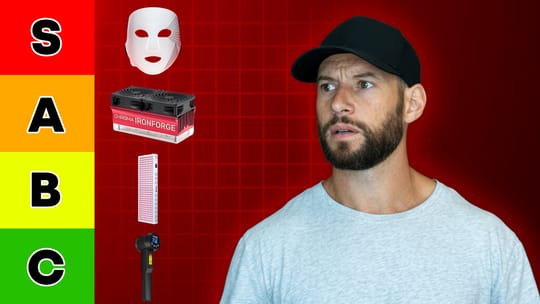Light Therapy: Definition and Key Types
Light therapy refers to the use of specific wavelengths of light to improve health, performance, or recovery. While natural sunlight is the original form of light therapy, modern tools like red light panels, saunas, and lasers now make it possible to deliver targeted light benefits at home.
Red light therapy is one of the most popular forms, using red and near-infrared wavelengths to support cellular energy, reduce inflammation, and promote healing. It’s considered a subcategory of light therapy, alongside others like blue light, ultraviolet light, and infrared saunas.
👉 New to red light therapy? First, read our full breakdown.
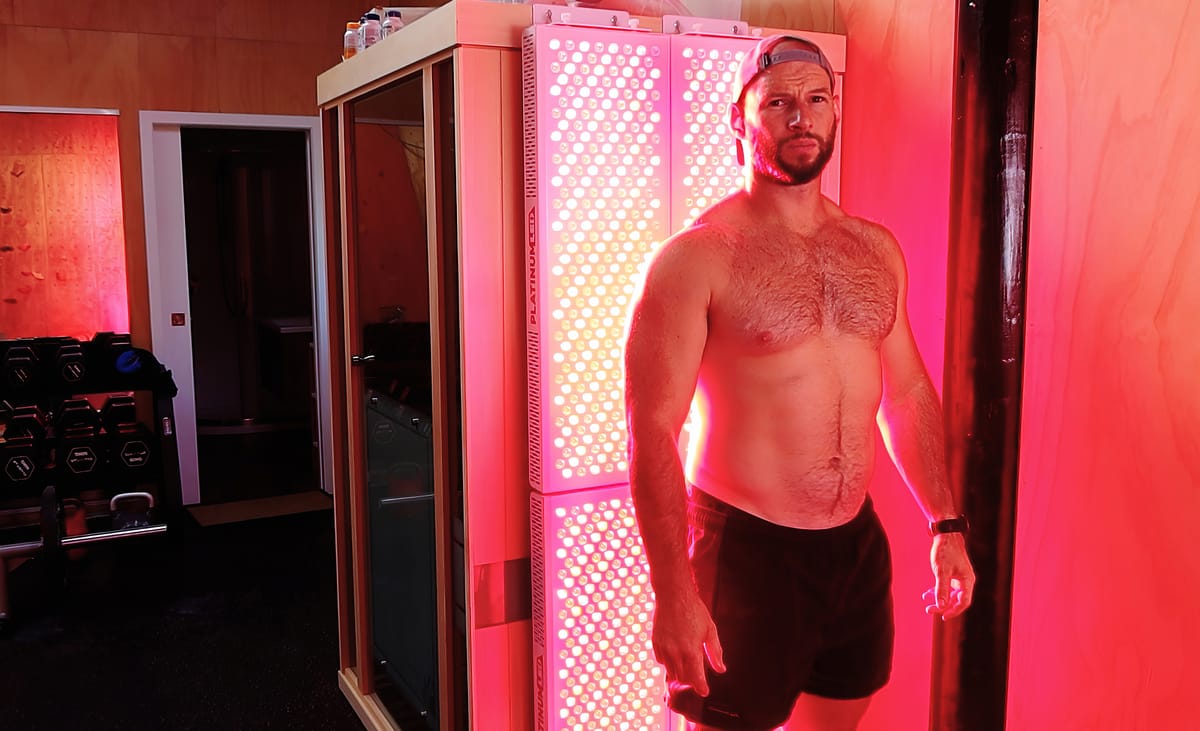
Each type of light interacts with the body differently — depending on the wavelength, the depth of penetration, and the biological effects triggered. Red and NIR light can reach deeper tissues and stimulate the mitochondria (the “power plants” of your cells), while others like blue and UV remain more surface-level.
Thanks to advancements in LED technology, light therapy is now more accessible than ever — no longer confined to clinics or labs. From small spot treatments to full-body panels, a range of tools exists to match different goals.
💡 Wondering which light therapy device is right for you? Keep reading to avoid common mistakes and make a smart, informed choice.
Red Light Therapy Buyers Guide: Avoid These 15 Mistakes!
This blog has been updated with 2024-2025 panels/information.
15 Essential Things to Consider Before Buying a Red Light Therapy Panel
This guide is a must-read for buying a red light therapy panel. After testing hundreds of panels over the past six years, I've seen the good, the bad, and the downright unnecessary.
Here, I'll cover 15 critical factors you must consider before purchasing. These go beyond the basics like size and warranty—we're diving deep. Let's get started.
1. Know Your Treatment Goals
The first and most crucial question is: What do you want to treat? Your choice of panel depends on your treatment area.
- Small Areas: A compact model like the Infraredi Flex Mini suits localized issues like sore shoulders.
- Full Body Treatments: A more extensive or multi-panel setup is necessary to optimize your entire body's mitochondria.
Remember that the actual treatment area aligns closely with the LED's dimensions. Beam angles and coverage graphics can be misleading. From my testing, light intensity diminishes significantly outside the direct LED range. If you want head-to-toe coverage, you need a physically large panel to handle that.
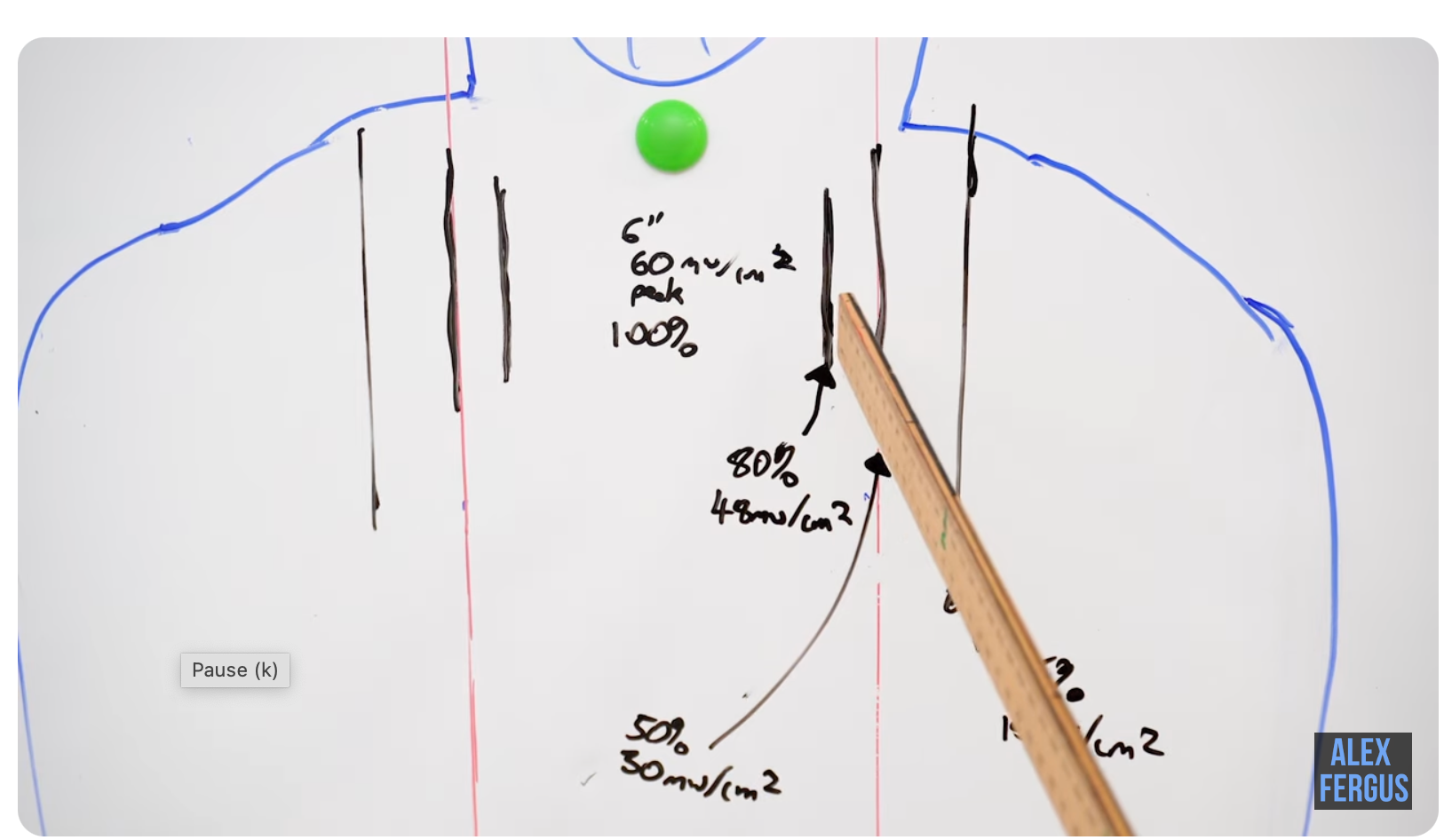
2. Budget Considerations
While full-body coverage might sound appealing, it may not fit your budget. The good news is that you can future-proof your investment—panels like the PlatinumLED Biomax 900 offer modular setups. You can start with one panel and expand later by wirelessly linking additional panels.
However, don't assume a higher price equals better quality. For example, Joovv panels are notoriously expensive, yet they're not always the best-performing option.
If you're on a tight budget, I've reviewed affordable tabletop panels, which you can find in the video below.
3. Wavelengths Matter
Traditionally, red light therapy panels featured 660nm red light and 850nm near-infrared light. While these are beneficial, other wavelengths, like 810nm, offer unique advantages.
Some panels, like the BioMax, include seven different wavelengths, while others, like Red Light Rising, stick to the basics. My preference leans toward panels incorporating 810nm due to its extensive research-backed benefits.
4. Ease of Use
Some panels are user-friendly, with features like remote controls or touchscreens, while others are more basic. Consider what's important to you:
- Remotes and Timers: Highly recommended for convenience.
- Dimmable Lights: Useful for adjusting intensity.
- Simple Switches: Best for straightforward setups.

5. The Company's Reputation
Red light therapy is booming, and new companies pop up weekly. Stick to brands that have been around for at least a few years. Why? It's easy to start a Red Light Therapy company, but what happens if they receive a bad batch? Can a new startup afford to honor the warranty and fix the panels? When a company goes bankrupt, you lose support for warranties and repairs.
Also, look for a good warranty. A minimum two—to three-year warranty is a good benchmark.
6. Safety: EMF and Flicker
Next, we have safety issues. Most of these panels are safe, and when I say safety, I don't mean you'll get an electric shock—though I guess that could happen if you're using something dodgy.
The main concerns here are the EMF output and flicker.
Some older panels and very cheap panels today use low-cost LEDs that flicker. We can't detect this flicker with our eyes, but it's there. I've done a video on this, and that flicker can cause stress and even headaches. Ideally, you want a panel that puts out clean, pure, therapeutic light without any stresses.
Next is the non-native EMF issue. Again, some older or low-cost panels emit many non-native EMFs. This can be stressful, and if you're spending a thousand dollars on one of these devices to improve your health, you don't want to end up with something that adds extra stress instead.
In my reviews, I test all of these panels for EMF output. If you're worried about a specific panel, check out my reviews to see if it's safe or something to be cautious of.
7. Sound Levels
Most panels have fans to cool the LEDs, but some are louder than others. If you're noise-sensitive, check my reviews for panels with quieter operations. Trust me—a loud whir can make your sessions unbearable.
8. Future-Proofing Your Setup
When investing in a red light therapy panel, it's wise to consider how your needs might evolve. A typical scenario is someone buying a single panel, only to later purchase another panel from a different company and perhaps a smaller, more portable one. While this may seem flexible, it can lead to complications.
Here's why: having multiple panels from different brands can quickly become inefficient. They might each require separate power sources, individual controls, and separate stands, creating unnecessary clutter and inconvenience.
Instead, think long-term and choose a panel system that allows for modularity—essentially, panels that can link together, share power supplies, and be controlled from a single interface.
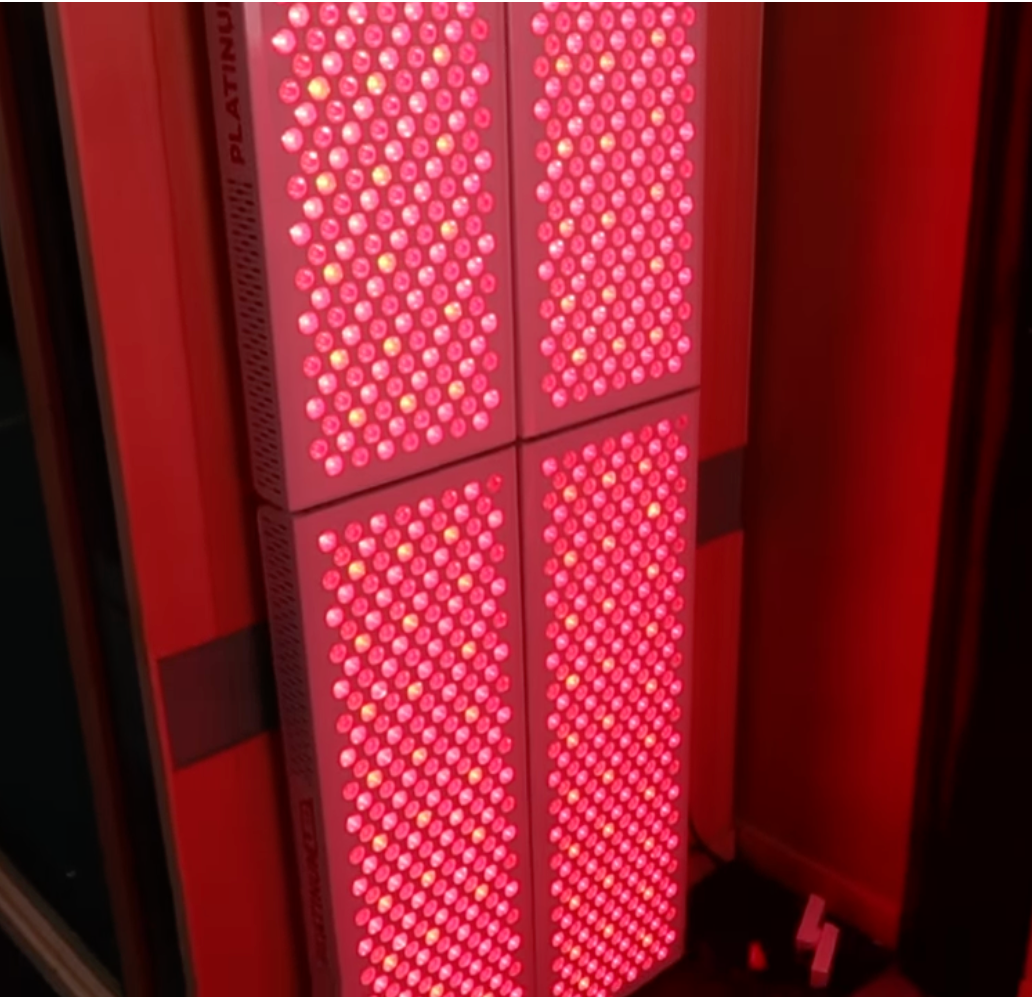
For example, with the BioMax panels, I have two of them connected to a single power plug and controlled by one interface. They even share the same stand, creating a seamless and cohesive setup. This level of integration simplifies use and reduces setup time, making your overall experience far more enjoyable.
If you anticipate expanding your setup, do thorough research before buying your first panel. Seek modular features that link panels together to form a more extensive array. Most modern panels offer this feature, but it's essential to confirm compatibility, even within the same brand.
For instance, MitoRed has its Mito Pro range, but its newer Mito Adapt panels aren't compatible with the older models. If you'd started with the Mito Pro and then added a Mito Adapt, you'd find yourself managing two separate systems that don't integrate. This means more cables, more controls to operate individually, and separate timers to sync. While this isn't a dealbreaker, it's far from ideal, especially when a bit of foresight could have avoided the hassle.
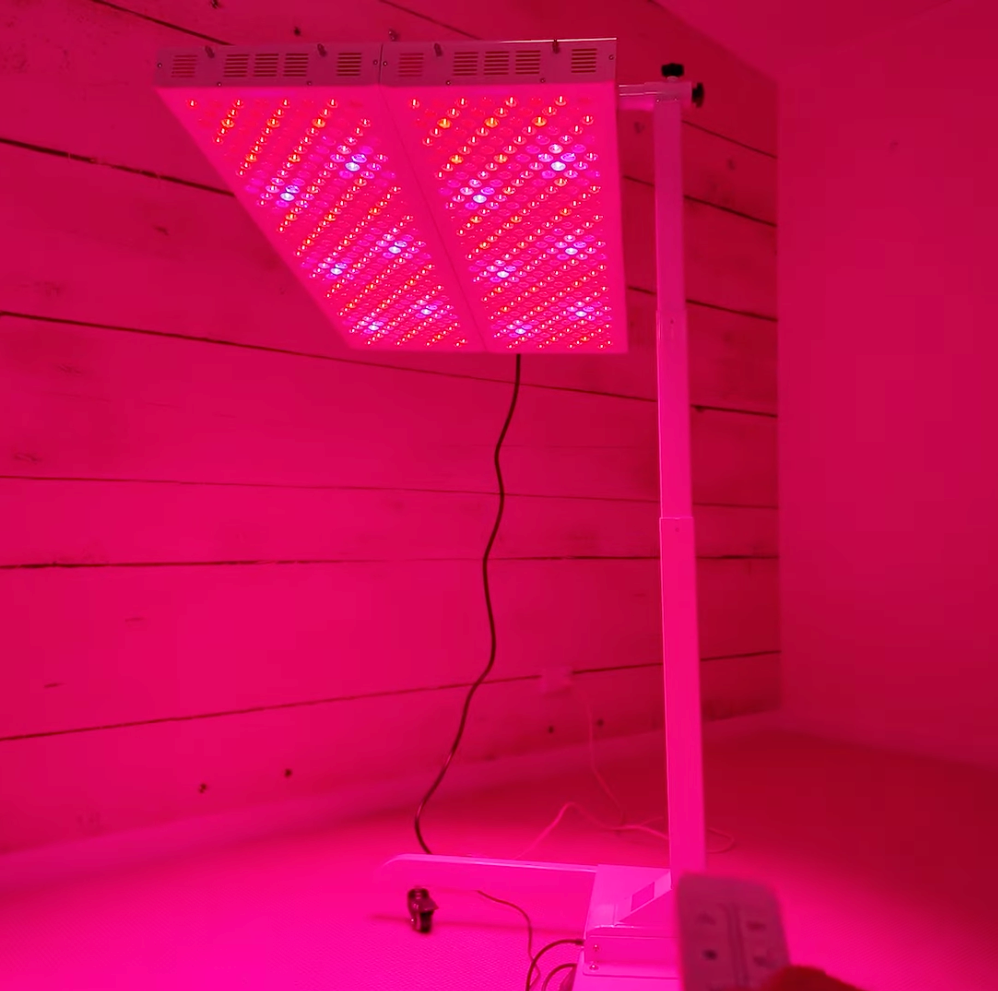
9. Stands
Stands are also part of future-proofing. For example, consider whether the panel comes with—or can be upgraded to include—a stand. Basic floor mounts might work now, but motorized stands or overhead mounts could enhance convenience and comfort as your setup evolves.
Many companies sell stands designed explicitly for their panels, but not all stands are interchangeable between brands or different product ranges within the same brand. If you plan to mount multiple panels or upgrade later, ensure your stand is compatible with your intended setup.
By thinking ahead and future-proofing your red light therapy system, you'll save time, money, and effort in the long run while creating a smoother and more enjoyable experience.
10. Power and Irradiance
Power output is one of the most hyped-up features in red light therapy panels, but it's also one of the messiest topics. Companies often claim to have the "most powerful panel" on the market, but here's what you need to know:
- Testing Methods Vary: Power can be measured at various distances (1 inch, 6 inches, 12 inches) or calculated as a peak versus an average reading. There's no industry standard, so comparing claims between brands can be misleading.
- Independent Lab Testing: Some companies share lab results that aren't foolproof. I've reviewed many of these reports, and inconsistencies are typical.
To address this confusion, I test panels using my spectrometer and a consistent protocol. This allows me to provide comparable power figures across all panels. My reviews and comprehensive red light therapy resources include these results.
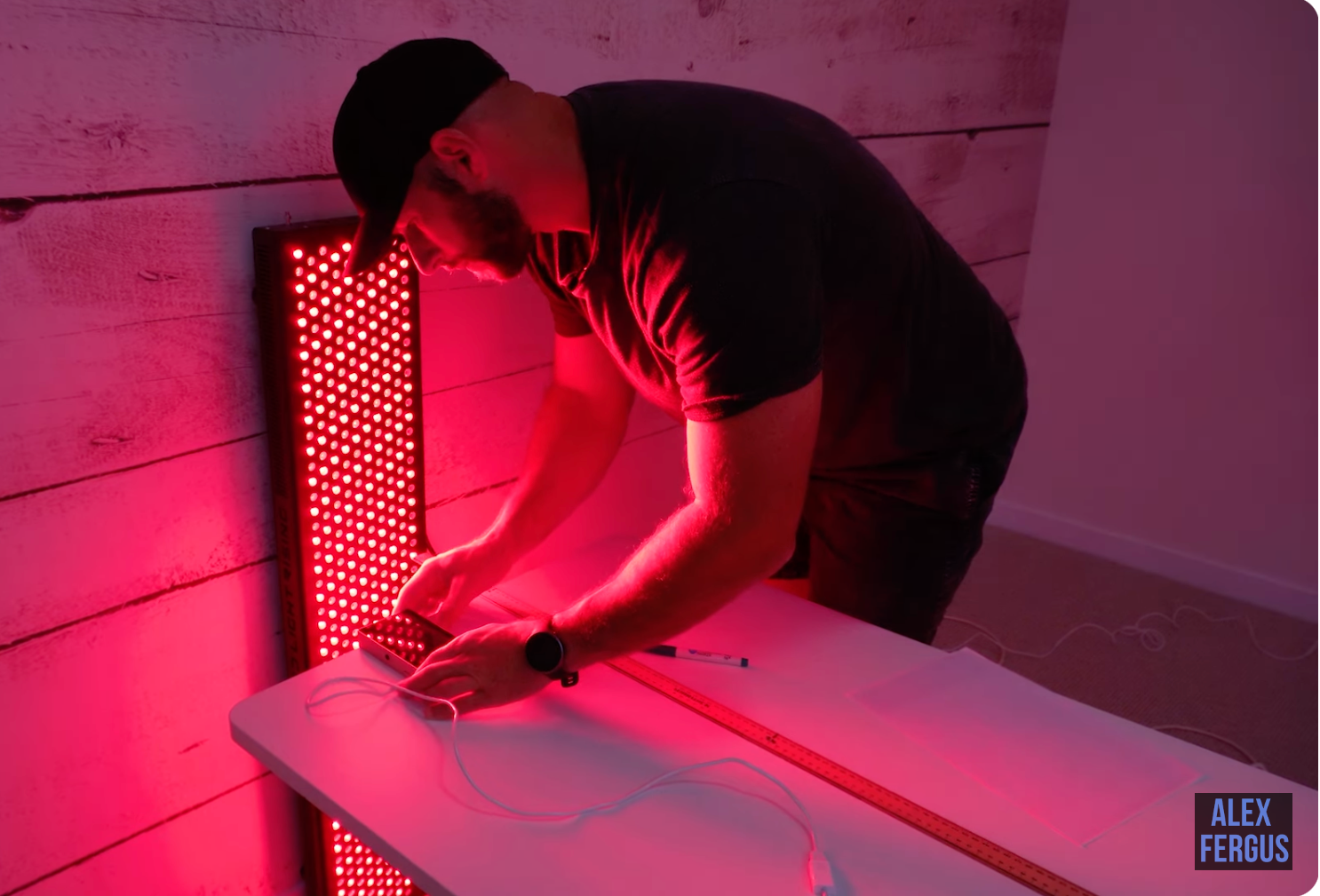
Key Takeaways on Power:
- If you buy from a reputable brand in 2023 or later, you'll likely get a powerful enough panel. Even budget-friendly options now provide adequate therapeutic doses.
- Overly powerful panels aren't always better. They can lead to overuse or unnecessary expense. Balance is key.
- Higher-powered panels can reduce treatment times or allow for more flexible positioning (e.g., standing further away while doing stretches or meditating).
The goal is to find a panel that delivers reliable power without excessive or underwhelming. A well-balanced panel saves time, money, and hassle.
11. Included Accessories
Don't overlook accessories—they can make or break your experience. Most panels include basics like power cables and hanging kits, but premium brands might offer extras such as:
- Remote Controls: Perfect for adjusting settings without interrupting your session.
- Protective Goggles: Essential for eye safety.
- Carrying Cases or Storage Bags: These are useful for portability and organization.
- Stands: Some panels, such as the Mito Red Table Top, include a stand.
- Instructions: Some companies include an extensive full-color manual, while others have a quick start guide.
Check if these extras are included or need to be purchased separately, as they can significantly add to your overall cost.
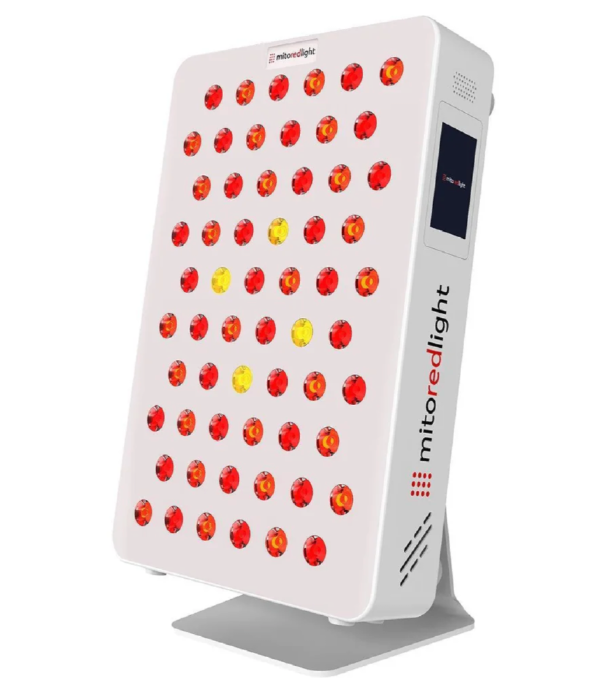
12. Discounts and Promotions
Red light therapy panels are a significant investment, but you can save considerable money if you shop strategically. Many companies offer seasonal sales, bundle deals, or first-time buyer discounts.
Signing up for email newsletters or following brands on social media can keep you informed about these promotions. Often my affliate links and code can be "stacked" with a sale thus saving you even more money
Additionally, consider looking for packages that include valuable accessories. For instance, a panel bundled with a stand or remote control might save you money compared to purchasing these separately. Be wary of deals that seem too good to be true, though, as they could indicate a low-quality product.
13. Shipping and Taxes
When purchasing a red light therapy panel, shipping and potential import taxes are often overlooked. Many companies offer free shipping within mainland America if you're lucky enough to live in the United States. However, shipping rates will vary depending on your location if the panel you're purchasing is from a company based in Canada, the UK, or Australia.
For example, buying from an American company might seem appealing due to the competitive prices if you live in Australia. However, the final price may be much higher once you factor in shipping costs.
While I provide rough guidelines for shipping costs in my reviews and product database, the most reliable way to determine the shipping fee is to add the product to your cart, apply any discount codes, and input your address to generate an accurate shipping quote.
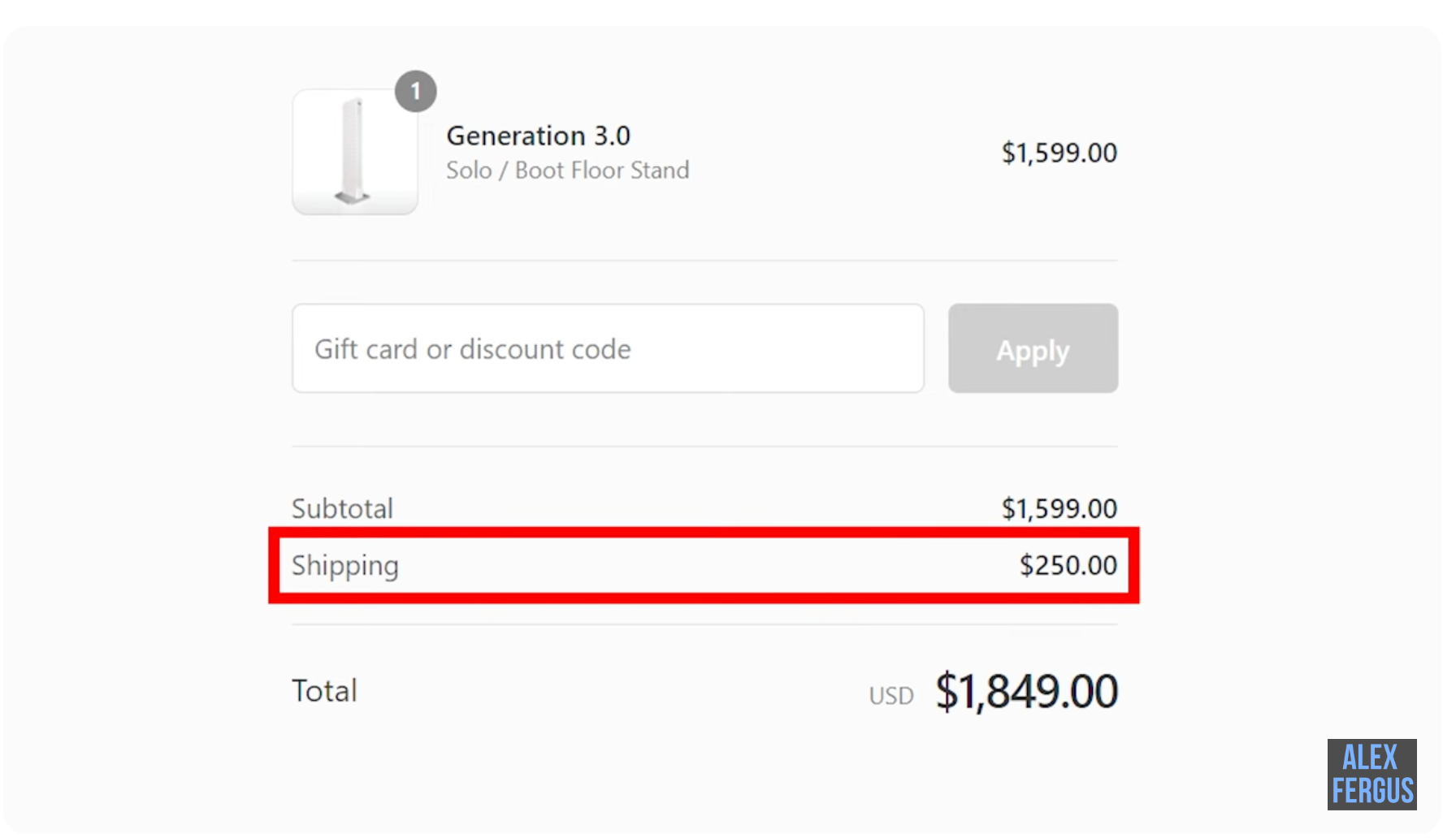
Another issue to consider is import taxes or duties. Unfortunately, this can be unpredictable and varies widely depending on your country. While I'd love to provide specific recommendations for avoiding these charges, it's often a hit-or-miss situation.
If you want complete clarity on the final price, including product cost, shipping fees, and taxes, I recommend purchasing from a company based in your country.
My product database features the locations of various red light therapy companies. You can filter by region, such as Australia, to find nearby brands. This allows you to know your total costs upfront, minimizing the chances of unexpected fees.
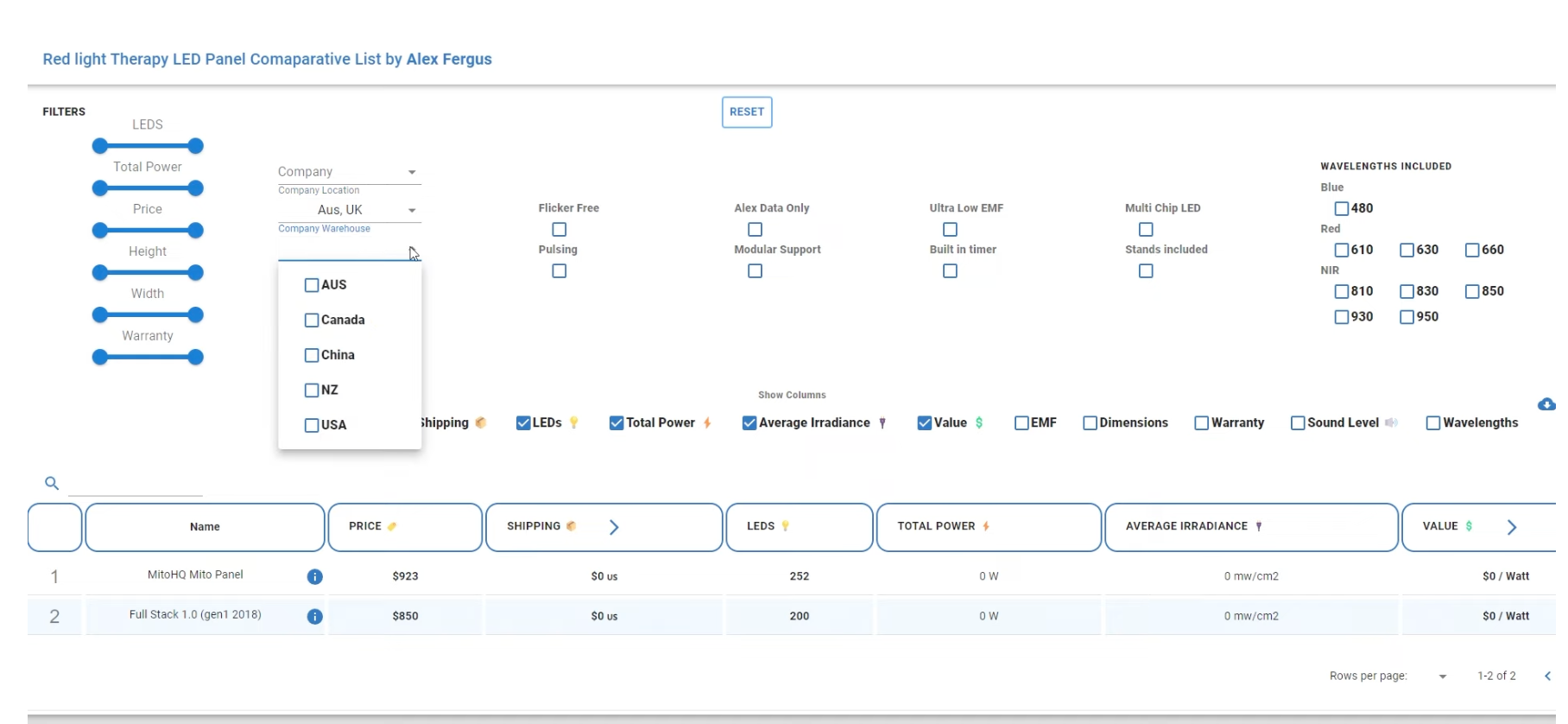
14. Advanced Features
While a basic red light therapy panel that emits sufficient red and near-infrared light is often enough to meet most needs, advanced features can enhance your experience. Some of these features include:
- Built-in Timers: A convenient way to ensure you stick to recommended session durations without needing an external timer.
- Brightness Adjustment: Dimming or changing the panel's intensity can make sessions more comfortable and adaptable to your needs.
- Wavelength Control: Panels that allow you to switch off one wavelength (e.g., red light) while keeping another (e.g., near-infrared) active can provide greater versatility.
- Pulsed Light Therapy: This feature uses pre-programmed frequencies to pulse or flicker the light. While pulsed therapy isn't essential, some users believe it offers added benefits. I've covered the topic of pulsed red light therapy in more detail in a separate video.
If these features are important to you, doing your homework is essential. My reviews and content include detailed breakdowns of which panels offer these options so you can ensure the product you purchase meets your specific needs.
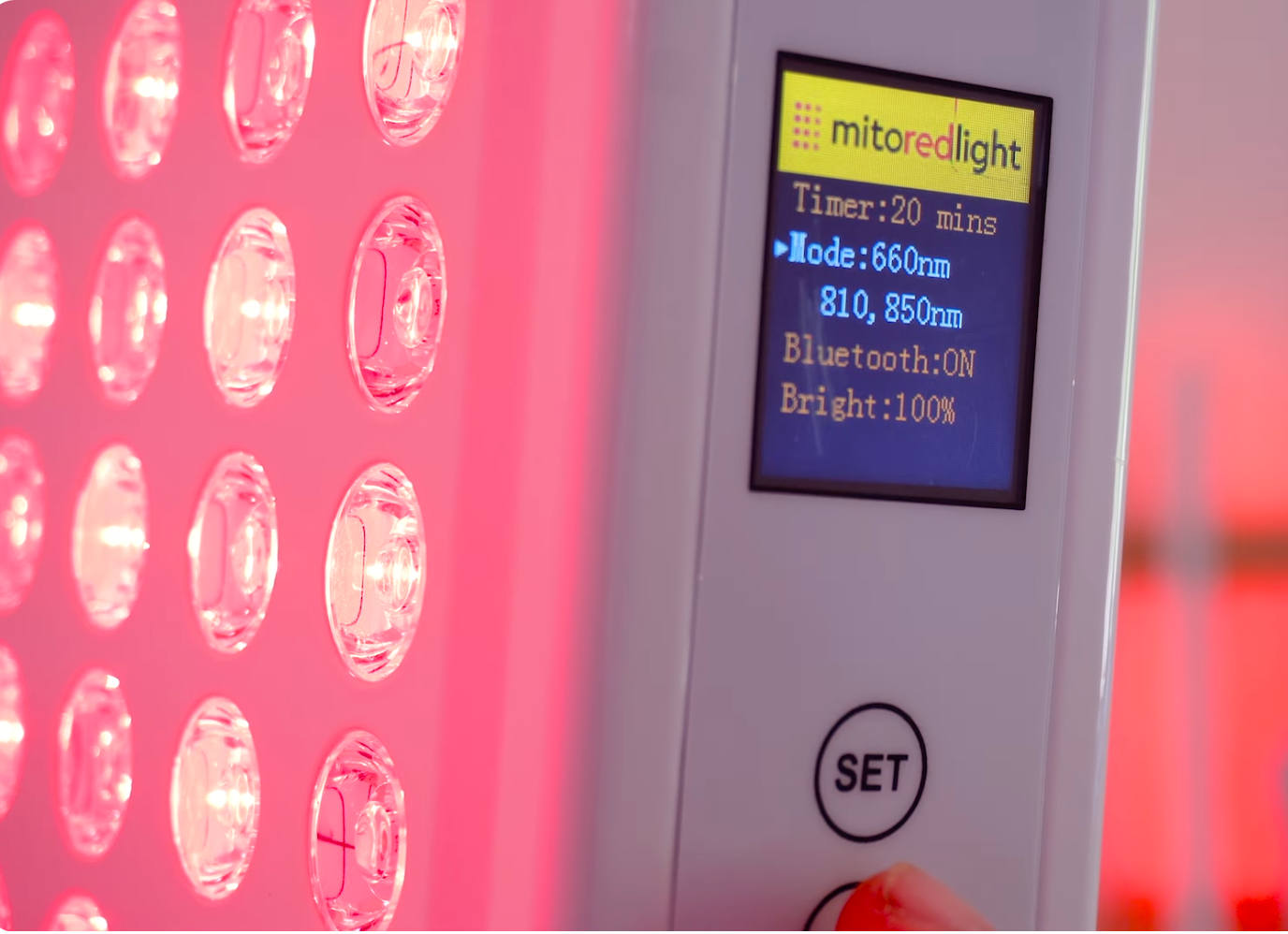
15. Independent Reviews
Marketing claims can make every panel seem like the "best on the market." To cut through the noise, rely on independent reviews from trusted sources.
These reviews often include details about panel performance, build quality, and additional features—information you won't find in company brochures.
Look for reviews that provide quantifiable data, such as:
- Actual power output measurements
- EMF and flicker levels
- Sound levels and cooling efficiency
- Build quality and longevity
A review that also compares multiple panels using consistent testing protocols can help you see how one product compares to its competitors.
I include this data in my reviews to ensure you have all the information you need to make an informed decision.
Red Light Therapy Buyer's Guide Conclusion
Your lifestyle and available space play a significant role in choosing the right panel. Consider where and how you plan to use your red light therapy device. Do you need a setup that allows you to treat your back while lying down? Or are you looking for a door-mounted panel to save space?
For example:
- Portable Panels: Great for traveling or targeting smaller areas.
- Adjustable Stands: Ideal for treating specific body parts or performing therapy while seated or standing.
- Wall or Door Mounts: Perfect for smaller spaces or when a stand isn't practical.
If you enjoy multitasking, like doing yoga or meditating during sessions, you'll want a panel that accommodates those activities. Ensure the panel is adjustable to the correct angle and height for your routine.
Navigating the overwhelming number of options on the market can feel daunting. That's why using resources is essential to simplify the decision-making process.
I've created a comprehensive database where you can filter panels based on key criteria like size, price, power output, etc. This allows you to compare options side-by-side and find panels tailored to your specific needs.
Whether you're new to red light therapy or upgrading your setup, having access to unbiased information and detailed comparisons is invaluable. It ensures your investment aligns with your goals and avoids common pitfalls like overpaying for unnecessary features.
Additional Resources
If you're still unsure which panel is right, here are some additional resources.
- YouTube: Light Therapy Insiders by Alex Fergus – Dive into expert-led video tutorials and discussions.
- Website: Light Therapy Insiders – Access comprehensive articles, guides, and product insights.
- Instagram: @LightTherapyInsiders – Follow us for quick tips, updates, and engaging red-light therapy content.
- TikTok: @light_therapy_insiders – Watch short, informative videos with the latest red light therapy insights.
- Podcast Platforms: Listen to our in-depth interviews on all major platforms. Find me with the title: title: "Alex Fergus - Light Therapy Insiders" or with this link: https://feeds.buzzsprout.com/2383779.rss
- Facebook Group: Red Light Therapy Discussion. This is an active group with over 15,000 members. We have more in-depth discussions there. I hope you'll join us in the interesting conversations. Members share their ideas, observations, experiences, questions, and review requests.
- Deals & Discounts : If you have decided on the product you want, be sure to check out our Deals Page to see if you can pick up a discount before buying. Light Therapy Insiders has managed to source discounts ranging from 5% to 10% or more on most red light therapy products.
- Recommendations Page: Looking for a 'done for you' recommendation? Don't want to study the data and try and determine what is the best option for you? Then head to our Recommendations page where we outline the best product for various goals (and budgets!)
- Reviews & Comparisons: We review an extensive amount of Red Light Therapy products. And each week we're publishing new reviews (so be sure to subscribe to our email list). You can see all of our reviews on our Review page. You can also check out all our video reviews on our YouTube Channel.
- Red Light Therapy Shopping Tool: This database is the ultimate tool to help you find your perfect red light device. If you know exactly what you want - what size, what wavelengths, maybe even where it's shipped from - head over to our product database, adjust the filters to suit and see what remains.
Items Mentioned In This Article
✅ Buy a PlatinumLED BioMax panel or accessories, and use the following link for a discount: https://aferg.co/redled
✅ For a Mito Red Mito Red panel, such as the MitoPRO or MitoADAPT use this link : https://aferg.co/7d221. The discount code is generated after you click the link.
✅ To get a Lightpath LED product use code ALEX and get 5% off with the following link: https://aferg.co/lightpathled
✅ You can get an Infraredi Flex Mini or Max 2022 - use code ALEX for a 5% discount and the following link: https://aferg.co/infraredi - other Infraredi panels can also be bought through that link
✅ Interested in getting a Joovv? Click here: https://aferg.co/joovvbca0 - no discount available
✅ For a Red Light Rising Advantage in the UK, use discount code ALEX and the following link: https://aferg.co/redlightrising
Consider These YouTube Videos As Well:
⭐ Targeted Red Light Treatment = Full-Body Benefits?
⭐ Best Red Light Therapy Panel 2024? EPIC Comparison
⭐ Best Red Light Therapy Body Panels 2024: HUGE Comparison!
⭐ How To Use Red Light Therapy 101: Know THIS For Starters
Found This Interesting? Then You Might Like:
⭐ The Power Of Red Light Therapy On Mitochondria
⭐ Red Light Therapy: What’s The Ideal Distance from Skin?
⭐ Red Light Therapy Dosing Chart: The Raw Data From Hundreds Of Studies
⭐ Is Red Light Therapy Science-Based? An Introduction
Keen To Learn More?
Not quite ready to buy, but keen to dive deeper into this amazing world of light therapy? Then here are a few articles and videos that we thought you may enjoy:









